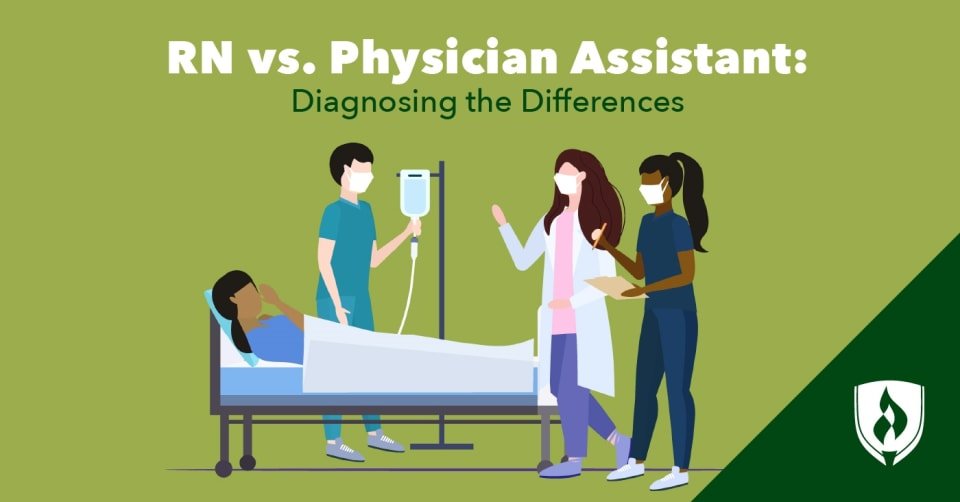
Buy ready-to-submit essays. No Plagiarism Guarantee
Note: All our papers are written by real people, not generated by AI.
When it comes to healthcare professionals, Registered Nurses (RNs) and Physician Assistants (PAs) are two common roles that may be confusing to differentiate. While both play a crucial role in patient care, there are some key differences between the two. In this article, we will explore the RN vs. PA debate and highlight the distinctions between these two roles.
Education and Training
The educational requirements for becoming an RN and PA are different. To become an RN, you need to complete an associate or bachelor’s degree program in nursing. RNs can also earn a diploma in nursing from a hospital-based program, although this is becoming less common. These programs typically take two to four years to complete.
On the other hand, to become a PA, you must complete a master’s degree program in physician assistant studies. These programs generally take two to three years to complete and require a bachelor’s degree as a prerequisite. Additionally, PAs must pass the Physician Assistant National Certifying Examination (PANCE) and obtain state licensure to practice.
Need Help Writing an Essay?
Tell us about your ASSIGNMENT and we will find the best WRITER for your paper.
Get Help Now!In terms of clinical experience, both RNs and PAs are required to complete supervised clinical rotations during their education and training.
Scope of Practice
The scope of practice is one of the most significant differences between RNs and PAs. RNs work under the direction of physicians or other healthcare providers, and their responsibilities primarily revolve around patient care. They can perform basic medical procedures such as taking vital signs, administering medications, and monitoring patient conditions. However, they cannot diagnose illnesses or prescribe medications.
On the other hand, PAs have a more extensive scope of practice. They can diagnose illnesses, develop treatment plans, and prescribe medications under the supervision of a licensed physician. PAs can also order and interpret diagnostic tests, perform physical exams, and provide patient education. PAs work under the supervision of a physician, but they are authorized to make clinical decisions and provide care independently.
Responsibilities
The day-to-day responsibilities of an RN and PA also differ. RNs typically work in hospitals, clinics, or long-term care facilities and are responsible for providing direct patient care. They work closely with patients and their families, assess patient conditions, monitor vital signs, administer medications, and perform basic medical procedures. RNs also communicate with physicians and other healthcare providers to ensure the delivery of quality care.
In contrast, PAs work in various healthcare settings, including hospitals, clinics, and physician offices. They work under the supervision of a licensed physician and are responsible for diagnosing illnesses, developing treatment plans, and prescribing medications. PAs also perform physical exams, order and interpret diagnostic tests, and provide patient education. They work collaboratively with physicians, nurses, and other healthcare professionals to ensure the delivery of comprehensive care.
Salary and Job Outlook
The salary and job outlook for RNs and PAs are both promising. According to the Bureau of Labor Statistics (BLS), the median annual salary for RNs in May 2020 was $75,330. The highest-paying industries for RNs include government, hospitals, and home healthcare services. The BLS also projects a 7% job growth rate for RNs between 2019 and 2029, which is faster than the average for all occupations.
In comparison, the median annual salary for PAs in May 2020 was $115,390. The highest-paying industries for PAs include outpatient care centers, hospitals, and educational services. The BLS also projects a 31% job growth rate for PAs between 2019 and 2029, which is much faster than the average for all occupations.
RELATED: What Does an LPN Do? A Closer Look at These Versatile Caregivers
Collaboration with Physicians
Another key difference between RNs and PAs is their collaboration with physicians. RNs work closely with physicians, but they do not have the authority to make clinical decisions independently. PAs, on the other hand, work collaboratively with physicians but have more autonomy in their decision-making process.
Physicians rely on RNs to provide quality care for their patients. RNs are responsible for monitoring patients’ vital signs, administering medications, and communicating with physicians about changes in patient conditions. They work closely with physicians to ensure that patients receive appropriate care, but they do not make clinical decisions independently.
PAs, on the other hand, work collaboratively with physicians but have more autonomy in their decision-making process. They are authorized to diagnose illnesses, develop treatment plans, and prescribe medications under the supervision of a licensed physician. PAs work closely with physicians to ensure that patients receive comprehensive care, but they have more responsibility in making clinical decisions.
Patient Interaction
Patient interaction is another area where RNs and PAs differ. RNs typically spend more time with patients than PAs. They provide direct patient care, administer medications, and perform basic medical procedures. RNs also communicate with patients and their families to provide emotional support and education about their condition.
PAs also interact with patients, but their interactions are often more focused on diagnosing and treating illnesses. They perform physical exams, order diagnostic tests, and develop treatment plans. PAs also prescribe medications and provide patient education, but their interactions with patients are usually shorter and more focused on clinical care.
Conclusion
In conclusion, RNs and PAs play critical roles in the healthcare system, but their responsibilities and scope of practice differ significantly. RNs provide direct patient care and work under the direction of physicians or other healthcare providers, while PAs have a more extensive scope of practice and work under the supervision of a licensed physician. Both RNs and PAs require education and training, but the requirements differ significantly. The salary and job outlook for both roles are promising, with PAs having a higher median annual salary and a faster job growth rate. In the end, choosing between an RN and PA role depends on personal preferences, career goals, and educational background.
Get Fast Writing Help – No Plagiarism Guarantee!
Need assistance with your writing? Look no further! Our team of skilled writers is prepared to provide you with prompt writing help. Rest assured, your work will be entirely original and free from any plagiarism, as we offer a guarantee against it. Experience swift and dependable writing assistance by reaching out to us today!
Top-Rated Essay Writing Service | GET Flawless papers for All Your classes!



